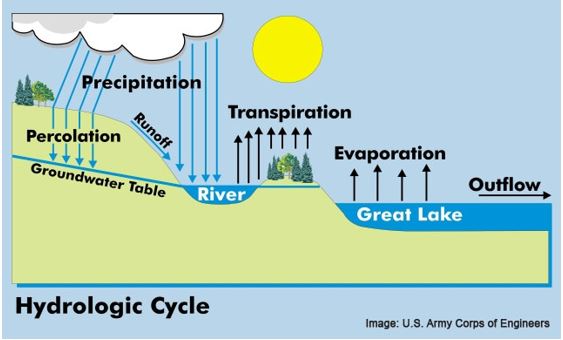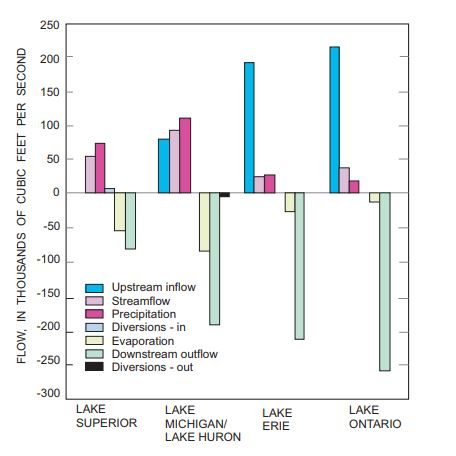
July 25, 2019
By Lydia Salus, Coastal Resilience Project Assistant, Wisconsin Sea Grant
The summer heat and sun will cause some of the high water to evaporate from Lake Michigan, right?
Actually, evaporation on the Great Lakes is driven by water temperature, not air temperature. Evaporation takes place when the water is warmer than the air. The greatest amount of evaporation will occur when the following three conditions are met:
- Warm water temperatures and cold air temperatures
- Low, relative humidity
- High wind speeds
Therefore, the highest evaporation rates happen in the late fall and early winter on the Great Lakes which can lead to evaporation rates as high as 0.6 inches per day. A one-day loss of 0.5 inches of water to evaporation from the total surface area of the Great Lakes is equivalent to over 20 times the flow rate of Niagara Falls.

Components of Great Lakes inflows positive values) and outflows negative values).
Credit: U.S. Geological Survey
More on evaporation and the water cycle for the Great Lakes!
Reference
Assessing the Impacts of Climate Variability and Change on Great Lakes Evaporation
Lenters, J. D., J. B. Anderton, P. Blanken, C. Spence, and A. E. Suyker, 2013: Assessing the Impacts of Climate Variability and Change on Great Lakes Evaporation. In: 2011 Project Reports. D. Brown, D. Bidwell, and L. Briley, eds. Available from the Great Lakes Integrated Sciences and Assessments (GLISA) Center: http://glisaclimate.org/media/GLISA_Lake_Evaporation.pdf
Image
Uncertainty in the Great Lakes Water Balance
Neff, Brian P. , and Nicholas, J.R., 2005, Uncertainty in the Great Lakes Water Balance: U.S. Geological Survey Scientific Investigations Report 2004-5100, 42 p.






